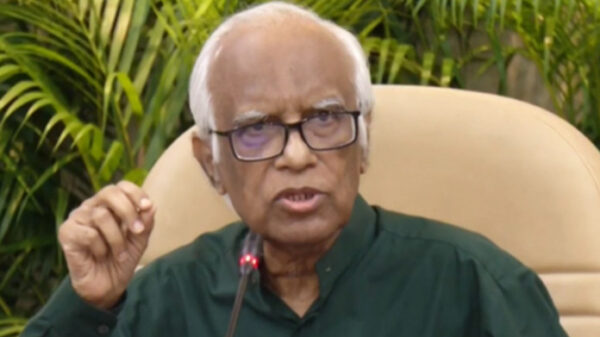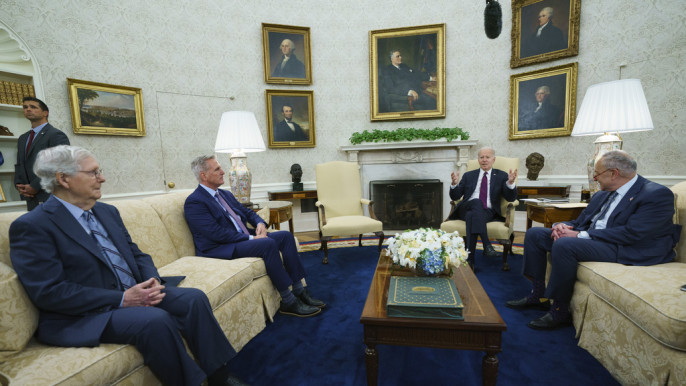One outcome is clear as Washington reaches for a budget deal to end the debt ceiling standoff: The ambi-tious COVID era of government spending — to cope with the pandemic and rebuild in its aftermath — is giving way to a new fiscal focus on tailored investments and stemming deficits.
President Joe Biden has said that recouping unspent COVID-19 funds is “on the table” in budget talks with Congress. And while the White House has threatened to veto Republican House Speaker Kevin McCarthy’s debt ceiling bill with its “devastating cuts” to federal programs, the administration has sig-naled a willingness to consider other budget caps.
The end result is a turnaround from just a few years ago, when Congress passed and then-president Don-ald Trump signed the historic $2.2 trillion CARES Act at the start of the COVID crisis in 2020. And it’s a dramatic realignment even as Biden’s bipartisan infrastructure law and Inflation Reduction Act are now investing billions of dollars into paving streets, shoring up the federal safety net and restructuring the U.S. economy.
“The appetite to throw a lot more money at major problems right now is significantly diminished, given what we’ve seen over the past several years,” said Shai Akabas, director of economic policy at the Bipar-tisan Policy Center, a nonpartisan organization in Washington.
The Treasury department has warned it will begin running out of money to pay the nation’s bills as soon as June 1, though an estimate Friday by the nonpartisan Congressional Budget office put the deadline at the first two weeks of June, potentially buying the negotiators time.
The contours of an agreement between the White House and Congress are within reach, even if the polit-ical will to end the standoff is uncertain. Negotiators are considering clawing back some $30 billion in unused COVID-19 funds, imposing spending caps over the next several years and approving permitting reforms to ease construction of energy projects and other developments, according to those familiar with the closed-door staff discussions.
The White House has been hesitant to engage in talks, insisting it is only willing to negotiate over the annual budget, not the debt ceiling, and Biden’s team is skeptical that McCarthy can cut any deal with his far-right House majority.
“There’s no deal to be had on the debt ceiling. There’s no negotiation to be had on the debt ceiling,” said White House press secretary Karine Jean-Pierre.
But McCarthy allies say the White House has fundamentally underestimated what the new Republican leader has been able to accomplish — first in the grueling fight to become House speaker, and now in having passed the House bill with $4.5 trillion in savings as an opening offer in negotiations. Both have emboldened McCarthy to push hard for a deal.
“The White House has been wrong every single time with understanding where we are with the House,” said Russ Vought, president of Center for American Renewal and Trump’s former director of the Office of Management and Budget. “They’re dealing with a new animal.”
The nation’s debt load has ballooned in recent years, to $31 trillion. That’s virtually double what it was during the last major debt ceiling showdown a decade ago, when Biden, as vice president to Barack Obama, faced the new class of “tea party” Republicans demanding spending cuts in exchange for raising the debt limit.
While the politics of the debt limit have intensified, the nation’s debt is nothing new. The U.S. balance sheets have been operating in the red for much of its history, dating back to the pre-Civil War era. That’s because government expenditures are routinely more than tax revenues, helping to subsidize the comforts Americans depend on — national security, public works, a federal safety net and basic opera-tions to keep a civil society running. In the U.S., individuals pay the bulk of the taxes, while corpora-tions pay less than 10%.
Much of the COVID-19 spending approved at the start of the pandemic has run its course and govern-ment spending is back to its typical levels, experts said. That includes the free vaccines, small business payroll funds, emergency payments to individuals, monthly child tax credits and supplemental food aid that protected Americans and the economy.
“Most of the big things we did are done — and they did an enormous amount of good,” said Sharon Par-rott, president of the Center for Budget and Policy Priorities in Washington.
“We actually showed that we know how to drive down poverty and drive up health insurance amid what would have been rising hardship,” she said.
Last year, Biden’s Inflation Reduction Act, which was signed into law over Republican opposition, was largely paid for with savings and new revenues elsewhere.
The popularity of some spending, particularly the child tax credits in the COVID-19 relief and the Infla-tion Reduction Act’s efforts to tackle climate change, shows the political hunger in the country for the kinds of investments that some Americans believe will help push the U.S. fully into a 21st century econ-omy.
A case in point: A core group of Midwestern Republican lawmakers prevented a rollback of the Inflation Reduction Act’s biofuel tax credits their colleagues wanted to scrap, persuading McCarthy to leave that out of the House bill. The federal money is propping up new investments in corn-heavy agriculture states.
To be sure, as McCarthy’s House Republicans now demand budget reductions in exchange for raising the debt limit, they have a harder time saying what government programs and services, in fact, they plan to cut.
House Republicans pushed back strenuously against Biden’s claims their bill would slash veterans and other services.
McCarthy, in his meeting with the president, went so far as to tell Biden that’s “a lie.”
The Republicans promise they will exempt the Defense Department and veterans’ health care once they draft the actual spending bills to match up with the House debt ceiling proposal, but there are no written guarantees those programs would not face cuts.
In fact, Democrats say if Republicans spare Defense and veterans from reductions, the cuts on the other departments would be as high as 22%.
Budget watchers often reiterate that the debt problem is not necessarily the amount of the debt load, ap-proaching 100% of the nation’s gross domestic product, but whether the federal government can contin-ue making the payments on the debt, especially as interest rates rise.
From the White House Friday, Mitch Landrieu, the infrastructure implementation coordinator, talked up the $1.2 trillion bipartisan infrastructure bill Biden signed into law 18 months ago. He said it is creating jobs, spurring private investment and showing what can happen when the sides comes together.
“We say once in a generation because it hasn’t happened in our lifetimes, and quite frankly it may not happen again in the near future,” he said.













































